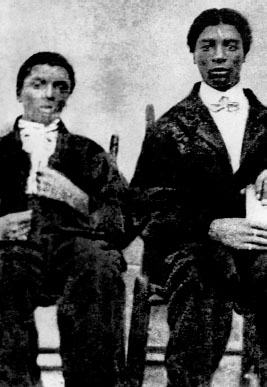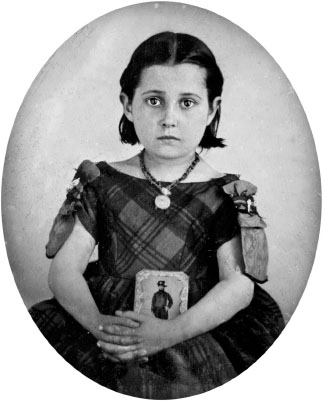
EPILOGUE
Once full civil rights were restored to Southern sympathizers and former Confederates, many were elected or reelected to public office. Among them was Jefferson Jones, now a postwar railroad promoter, who was returned to the state legislature as a representative from the “Kingdom of Callaway.”
John Henderson served as a United States senator until 1869. He, along with six other Republicans, broke ranks to vote against conviction of President Andrew Johnson in his impeachment trial. In 1875, Henderson was appointed a special prosecutor to try defendants in the Whiskey Ring scandal during the Grant Administration. A number of prominent Republicans—including General Orville Babcock, President Grant’s close friend and secretary—were accused of skimming tax revenues from the sale of whiskey. St. Louis was the center of the ring, but it had conspirators in several major cities. When Grant took steps that appeared to be motivated by the desire to protect Babcock, Henderson protested that the president was interfering with the prosecutions. Grant fired him. Henderson moved to Washington, D.C., in 1888.
Elvira and John Scott returned to Miami on June 21, 1865. There they stayed for the rest of their lives. Elvira had difficulty getting used to the status of newly freed slaves. She had to take over some household duties herself and hired African American women to do the rest. She was not satisfied with either their attitude or their work habits. To make matters worse, Elvira’s antislavery sister Julia came from Iowa to stay with her. Julia made sure that the former slaves at the house were aware of the significance of their new status, to Elvira’s annoyance. It was a relief when Julia finally left.
John died in 1888. Elvira took over management of the business and ran it successfully for many years. She wrote that “painting is my passion & I believe my talent.” In the last decade of her life, she produced a number of works that hung in her house and those of her neighbors. Some of her paintings were exhibited at the St. Louis World’s Fair in 1904. Elvira Scott died December 8, 1910.
Lizzie Powell moved to Virginia City, Nevada Territory, in 1864. There she met Alfred Hereford. They moved back to Missouri briefly after the war but soon moved again to Denver. In 1877, Lizzie Powell Hereford was returning from a drive with Mrs. John Routt, wife of the Colorado governor, when she was thrown from the carriage and sustained injuries that led to her death.
After her service for the Western Sanitary Commission, Phoebe Couzins entered into a profession that was almost exclusively the domain of men—the practice of law. She entered the law school at Washington University and was admitted to the bar in 1871. Couzins became involved in the movement for women’s rights. She gave a speech for women’s suffrage at the 1876 Democratic Convention in St. Louis. President Grover Cleveland appointed her father the United States marshal for the Eastern District of Missouri. After his death, President Cleveland appointed her to the post—the first woman ever to be a United States marshal. In later years, Couzins had a falling out with other suffragettes. She became crippled with arthritis and suffered from emotional instability. Couzins died in 1913 and was buried with her marshal’s badge on.
Spottswood Rice remained in St. Louis after the war. State law required former slaves to formalize their marriages, and Spottswood and Arry did so in October 1864. Their daughter Mary did make it to St. Louis despite the objections and excuses of Kitty Digges. Rice founded the St. Peter AME Church in St. Louis, which remains active to this day. Arry died in 1888. Spottswood remarried the next year and moved to Albuquerque, New Mexico, where he founded yet another AME church, the Grant Chapel. A few years later, they moved to Manitou, Colorado, where he founded a third church, the Payne Chapel. Spottswood Rice died on October 31, 1907. Mary remained in St. Louis, where she was interviewed by the Federal Writer’s Project in 1937 about her life and her parents’ lives as slaves.
Moses and Susan Carver obviously loved young George and his brother Jim very much. The Carvers moved George and Jim into their house and raised them as if they were their own children. George longed to know more about his mother, but there was little to tell. He cherished into adulthood her spinning wheel and the bill of sale by which Moses had acquired ownership of her.
Although Jim was tall and robust, George was always frail and sickly. But he had a keen curiosity and a tenaciousness to learn. The Carvers sent the boys to school in nearby Neosho when George was about twelve, but it provided only the most basic instruction. He spent the next decade moving from Missouri to Kansas to Minnesota, trying to find his niche. Finally, he moved to Ames, Iowa, to attend what is now Iowa State University. There he found his calling: botany. He was invited to head the Agriculture Department at Tuskegee Institute by Booker T. Washington. Over the next forty-seven years, George became a world-renowned scientist, researcher, inventor and teacher. He became famous for his research into soil conservation and the use of peanuts. By the time of his death in 1943, George Washington Carver was one of the most well-known African Americans in the United States. The Carver farm near Diamond, Missouri, was declared a National Monument—the first such honor for an African American.

George Washington Carver (left) and Jim Carver. George Washington Carver National Monument.
The soldiers and guerrillas returned to their homes and for the most part tried to resume their normal lives, but much of the bitterness and violence that accompanied the conflict continued. The saddest legacies of the war were the widows and orphans left by the estimated 700,000 soldiers who died in battle and from disease. (No one knows how many civilians died in the guerrilla war, but the number must be substantial.) Their only consolation was perhaps a photograph and a packet of letters.

An unidentified girl in mourning holding a photograph of her father, an officer in the Union cavalry, who died in the war. Library of Congress.
As a partial recompense, the United States government provided a monthly pension for survivors of Union soldiers amounting to one-half of the soldier’s monthly pay—for a private’s children, it was eight dollars per month until age sixteen. Survivors of Confederate soldiers received no federal help. Missouri finally voted to provide a pension to Confederate soldiers, but not their survivors, in 1911. Theda Skocpol found that about one-quarter of all Missourians—former soldiers and survivors—were receiving a Civil War pension in the years before World War I. These pensions were the first large social welfare program in the United States.